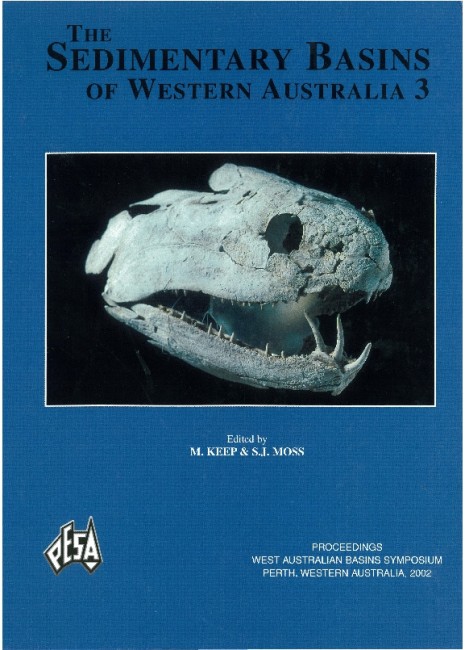Publication Name: The Sedimentary Basins of WA
Authors: S.C. George, M. Lisk, P.J. Eadington & R.A. Quezada
Publication Volume: 3
Date Published: December 2002
Number of Pages: 27
Reference Type: Book Section
Abstract:
The distribution of oil-bearing fluid inclusions (FI) in Jurassic reservoir sandstones from Bayu 1 (Northern Bonaparte Basin, Timor Sea) is consistent with the presence of a palaeo-oil column of at least 20 m height, beneath a 46-53 m thick palaeo-gas cap. The reservoir currently contains a thick (155 m) gas-condensate column.In order to assess the origin of the oil trapped in the fluid inclusions and its relationship, if any, to the gas
condensate, a detailed molecular geochemical study was carried out on a sample of extracted FI oil and a sample of condensate recovered from a similar interval by Modular Formation Dynamics Tester (MDT). Compared to the condensate, the FI oil was generated from a more marine-influenced, less day-rich source rock or source fades, which was deposited in a less oxic environment with greater eukaryotic input. The source rock of the condensate was more terrigenous and had greater microbial input. The Bayu FI oil contains a greater amount
of C28 and C29 tricyclic terpanes than the Bayu condensate, and particularly compared to the Elang!Plover-sourced oils from further to the northwest (e.g. Corallina and Laminaria), which are more terrestrially-dominated. The Bayu condensate has previously been attributed to either the Cretaceous Echuca Shoals Formation, or mixed sourcing from the less terrestrially-influenced fades of the Elang and Plover formations, together with the Flamingo Group. Analysis of the FI oil confirms a more marine-influenced source fades but suggests that the Echuca Shoals is the most likely source based on oil-oil and oilsource correlations. The FI oil appears to represent a marine source end-member and it is likely that mixing of this oil (sourced from the Echuca Shoals Formation) with hydrocarbons sourced from the more terrestrially dominated Plover/Elang source fades could account for the intermediate composition of the currently reservoired condensate. A discrete "Flamingo Group" is not required and this oil family may not be present in the Bayu area. The differences are nevertheless subtle and a contribution from the Flamingo Group cannot be completely discounted. The FI oil has a mid-oil window maturity (~0.75% vitrinite reflectance equivalent), whereas the currently reservoired condensate has a higher maturity (~0.9%). These maturity data are consistent with early expulsion from the more labile marine-derived organic matter in the Echuca Shoals Formation, followed by expulsion of large amounts of condensate from the more terrestrially-dominated Elang and Plover formations. Three possible transition mechanisms from gas over oil to condensate are consistent with the fluid inclusion petrographical and geochemical data. The first charge may have (1) been lost by breaching of the seal, (2) been displaced by the condensate, or (3) been partly dissolved in the later condensate charge. A combination of factors 2 and 3 is considered most likely, but further investigation is required to assess these options.


